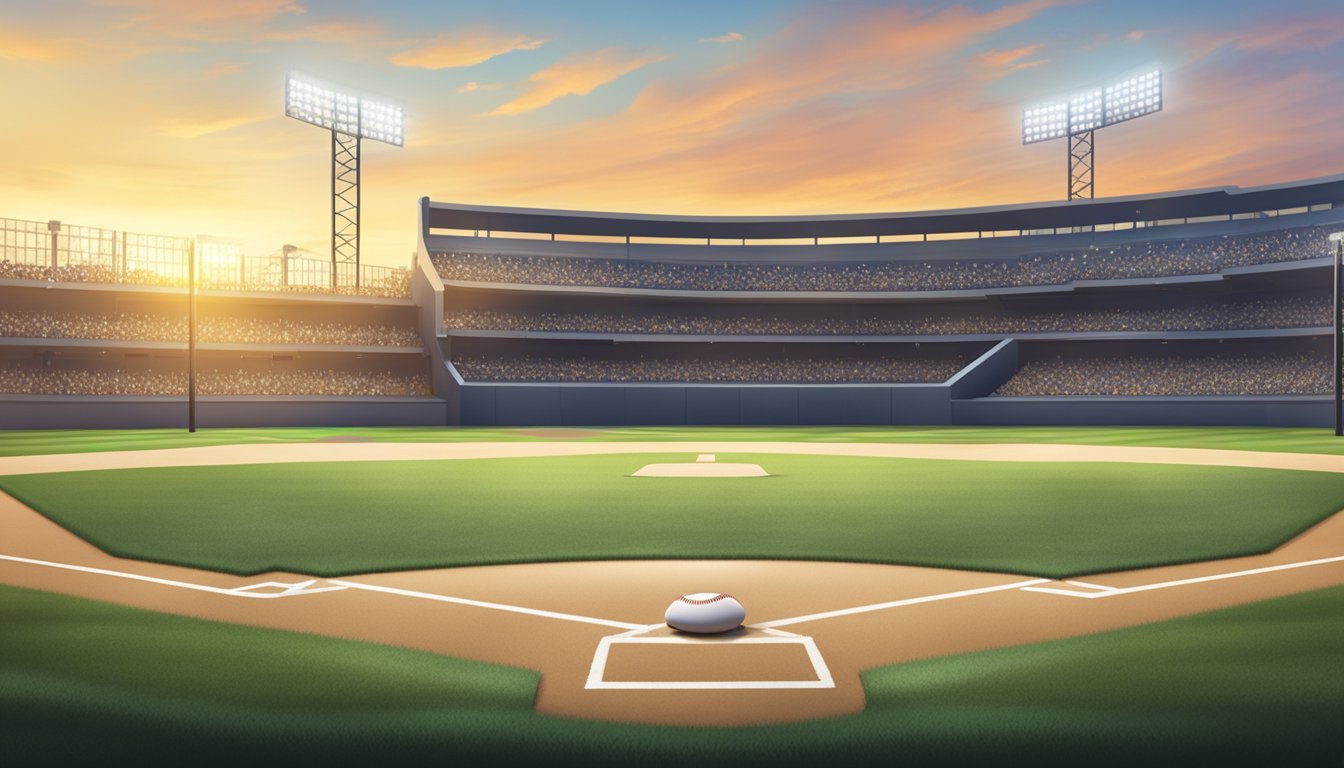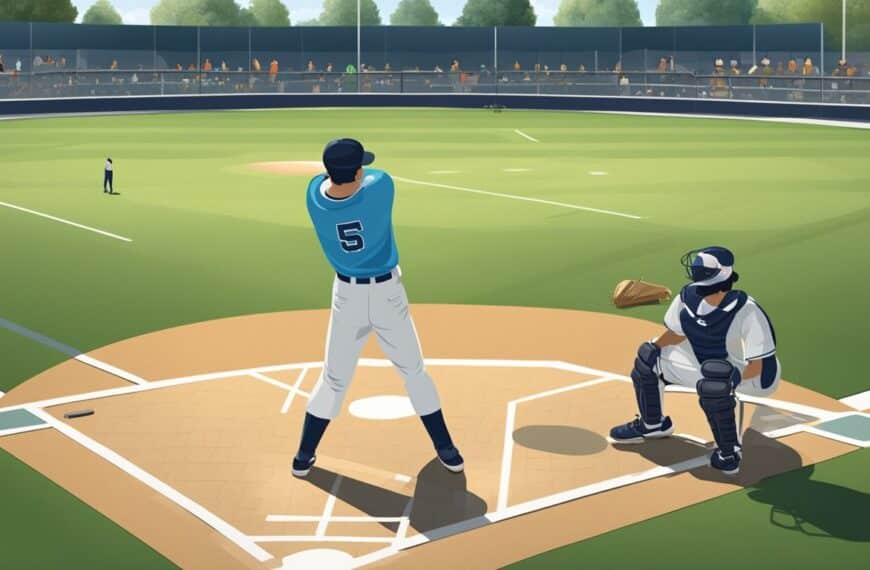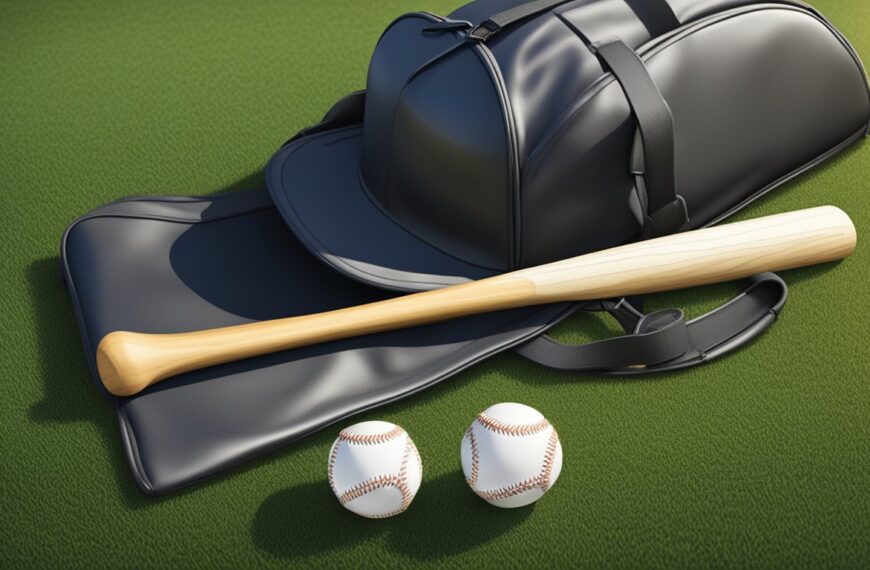The selection of a batting tee is a crucial step for players striving to improve their hitting technique in baseball and softball. These simple yet versatile training tools are essential for developing a player’s swing by allowing repetitive practice without the need for a pitcher. With a wide array of tees available, each boasting different features and designs, it’s important for players and coaches to choose one that will best serve their practice needs and enhance their performance.
Considerations for the ideal batting tee encompass durability, adjustability, and ease of use. Durability ensures that the tee withstands repeated use, while adjustability allows for a range of hitting heights and angles, catering to different player sizes and swing types. Ease of use is important for efficient practice sessions, allowing players to set up and adjust the tee quickly, focusing more on hitting and less on equipment management. Additionally, features such as the material of the tee, its base design, and additional accessories can significantly impact a player’s training regimen. As athletes aim to sharpen their skills through focused drills and techniques, the batting tee becomes an indispensable component of their training toolkit.
Key Takeaways
- A batting tee is vital for learning and refining hitting techniques.
- Selection criteria should include durability, adjustability, and user-friendliness.
- Tee features and design customization can greatly impact training effectiveness.
Understanding Batting Tees
Batting tees are essential training equipment for baseball and softball players, enhancing hitting technique and consistency. Selecting the perfect tee involves understanding the different types, materials, durability considerations, and criteria that match a player’s specific needs.
Types of Batting Tees
There are several types of batting tees available, each catering to different training requirements and player levels:
- Classic Tees: These are the basic models, great for beginners and offer simplicity in design and use.
- G Tee: Known for its adjustability and durability, the G Tee stands out for players who train frequently.
- Tanner Tee: A popular choice among professional players for its reliable performance and sturdy construction.
- Hybrid Tees: These combine different materials, offering a balance between stability and portability.
- Concept Tees: Designed to address specific training needs, these tees may include features like multi-position or movable components to aid in advanced hitting drills.
Materials and Durability
The materials used in batting tees impact their durability, weight, and stability:
- Rubber: It’s common in classic tees due to its weigh and cost-effectiveness, though prone to wear and tear.
- Metal: Metal tees are often the most durable, providing a solid base that resists frequent use.
- Plastic: Lightweight and portable, plastic tees can offer convenience but may lack the stability of metal or rubber options.
It is essential to consider the level of usage to determine the best material combination for a tee’s longevity.
Selection Criteria
When choosing the perfect batting tee, consider the following factors:
-
Adjustability:
- The ability to adjust height is crucial for a player to practice swings at different pitch locations.
- Look for a range that accommodates the player’s height and stance adjustments.
-
Portability:
- Assess if the tee needs to be easily transported, in which case, a lighter tee with a carry bag is beneficial.
- Balance portability with stability; the tee should not tip over easily during use.
-
Stability:
- A broad base design tends to offer better stability.
- Stability is key for repetitive practice and accurate feedback on swings.
-
Weight:
- The right weight ensures the tee stays in place during practice but isn’t too cumbersome to move as needed.
By prioritizing these criteria, players can identify the best batting tees that will facilitate effective practice and withstand the rigors of training sessions.
Improving Hitting Technique
https://www.youtube.com/watch?v=tsZGog9xn5Y&embed=true
The batting tee is an invaluable tool for honing swing mechanics and adjusting to the correct tee height, fundamental for developing a consistent, powerful batting form.
Swing Mechanics
Consistency is paramount in developing effective hitting skills. To achieve this, batters must focus on repeating the correct swing mechanics. This repetition, known as reps, builds muscle memory which allows for a smooth, natural swing during a game. It is essential that bat speed and timing are synchronized, as it directly impacts the ability to hit the ball solidly and with precision. Perfecting swing mechanics involves:
- Form: Ensuring that stance and grip are correct before initiating the swing.
- Range of Motion: Promoting a full range of motion to generate maximum power without sacrificing control.
- Reps: Regular practice to reinforce the learned technique and improve muscle coordination.
Adjusting Tee Height
Finding the ideal tee height is necessary to practice hitting across the entire strike zone. An adjustable height batting tee aids players in targeting the sweet spot on the bat, which is crucial for striking the ball effectively. The correct tee height allows for training swings at different levels of the strike zone to:
- High pitches: Tee at chest level
- Low pitches: Tee at knee level
Batters can adjust the tee for varying pitches, which expands their hitting range and better prepares them for live pitching scenarios. This fosters a habit of making adjustments necessary for diverse pitching scenarios they will face.
Practice Drills and Techniques
https://www.youtube.com/watch?v=pzvT71bYw8A&embed=true
Implementing a variety of batting tee drills enhances a player’s swing mechanics and timing. Disciplined practice allows for repetition (reps) of specific movements, fostering muscle memory and refining one’s hitting technique.
Static Tee Drills
Static tee drills provide players with the chance to concentrate on refining contact points and improving overall swing mechanics without the complexities of moving pitches.
-
Contact Point Drill:
- Place the tee at varying heights and distances from the plate to mimic different pitch locations.
- Perform consistent reps to master hitting baseballs at each contact point.
-
Inside Pitch Drill:
- The tee is positioned closer to the hitter to simulate the inside pitch.
- The focus is on hitting the ball with the correct part of the bat to avoid pulling the ball foul.
-
Outside Pitch Drill:
- The tee is set up away from the hitter to replicate an outside pitch location.
- The hitter works on extending the arms and maintaining a tight swing to drive the ball to the opposite field.
Movement-Based Drills
Movement-based drills integrate dynamic elements to better prepare players for live pitching conditions.
-
Stride and Swing Drill:
- Before swinging at a ball on the tee, the hitter incorporates their stride to build proper timing.
- This drill accentuates the importance of a well-coordinated front foot movement with the swinging motion.
-
Soft Toss Integration:
- A coach or a training aid softly tosses baseballs to the hitter from the side.
- The batter focuses on timing their swing to make contact with the ball as it passes over the plate.
-
Coach Pitch Practice:
- This simulates live pitching by having a coach pitch from a shortened distance.
- The batter practices timing swings to hit live-thrown baseballs, transitioning smoothly from tee work to live pitching scenarios.
Tee Features and Accessories
Selecting the perfect batting tee involves understanding the specific features and accessories that meet a player’s needs. These details differentiate between a productive batting practice and a frustrating one.
Height and Portability Features
The height of a batting tee is crucial as it should accommodate the batter’s stance and swing mechanics. Look for features such as an adjustable height mechanism, which allows the tee to suit players of various sizes. Tees with this capability typically offer a range from as low as 20 inches to over 40 inches.
Portability is essential for players and coaches on the move. Tees with a handle and lightweight construction are highly portable, making them easy to carry from the dugout to the practice field. The weight of a portable tee is often balanced to be light enough for transit yet heavy enough to remain upright during use.
Base and Stability Enhancements
A solid base is the foundation of a good batting tee. It ensures stability, preventing the tee from toppling over on impact. Look for a base plate that is weighted or designed to distribute weight evenly. Some tees have a quad design, featuring four points of contact with the ground, offering enhanced stability.
Base enhancements like interchangeable base plates can significantly impact a tee’s stability. These plates can vary in shape and size, allowing users to adjust the tee’s footprint. A larger base plate may be preferable for heavy hitters or uneven surfaces.
For tees designed with a FlexTop, batters can experience a more realistic feedback during practice. The flexibility allows for a slight give on impact, simulating the feeling of striking a real baseball. This design is usually coupled with materials that can withstand repeated use, ensuring longevity and durability.
Maintenance and Longevity
Selecting the perfect batting tee involves considering not just the purchase price, but the longevity and functionality of the equipment. Proper maintenance can prolong the lifespan and performance of a batting tee, ensuring that the investment continues to pay dividends. Regular care and understanding the warranty can mitigate the need for premature replacement, saving time and additional expenses.
Caring for Your Tee
- Routine Inspection: Regularly inspect the batting tee for signs of wear and tear. Look for cracks, stability issues, and any other signs of damage. This will help in identifying when repairs or adjustments are needed.
- Cleaning: After use, wipe down the tee with a damp cloth to remove dirt and debris. Avoid abrasive materials that could damage the surface.
- Storage: Store the batting tee in a cool, dry place when not in use to prevent any material degradation, which can affect durability.
Warranty and Customer Service
- Understanding the Warranty: Batting tees often come with a manufacturer’s warranty. It typically covers defects in materials and workmanship. Customers should familiarize themselves with the warranty terms, as it can save costs in the event of a defect.
- Customer Service Support: Should issues arise, a reliable customer service department is crucial. They can provide guidance on repairs, replacement parts, or processing a warranty claim.replaceable parts can often be ordered directly through customer service.
Choosing the Right Tee for You
https://www.youtube.com/watch?v=Ze1KzS-sJ6Q&embed=true
Selecting the perfect batting tee requires understanding the various options tailored to different skill levels and ages, from children just starting out to adults honing their skills.
Considerations for Kids and Beginners
For young children and beginners, the primary concern is finding a tee that meets their developmental needs, fostering a love for the game while building skills. The tee type for novices should typically feature:
- Adjustability: A broad height range to grow with the child.
- Stability: A sturdy base to withstand inevitable misses.
- Material: Durable, yet forgiving materials that can handle repeated use.
Tanner Heavy tees can be a good choice for this group. They offer excellent versatility and a more heavy-duty construction that can withstand the frequent impacts from inexperienced swings. This resilience makes them a substantial initial investment for parents or coaches looking for lasting value.
Options for Serious Players and Adults
Serious players and adults require a batting tee that can keep up with their advanced skills and rigorous practice schedules. They should look for premium tees that provide:
- Heavy-Duty Construction: To endure the wear and tear of frequent, intense practice sessions.
- Portability: For players on the go, easily transportable tees are a must.
- Adjustable Features: To mimic various pitch heights and angles, challenging the batter’s adaptability.
Adults should not shy away from investing in premium tee options that offer extra features like a weighted base for unparalleled stability, high-grade rubber, or silicone hitting surfaces for maximum durability. Such tees often provide the best blend of stability and versatility, catering to the serious athlete’s need for a comprehensive training tool.
Integrating Batting Tees Into Training Regimens
https://www.youtube.com/watch?v=6AX6maJAwx4&embed=true
Batting tees are essential tools in developing a hitter’s swing mechanics and consistency. They allow for a wide range of drills focusing on various aspects of the batting technique.
Solo Training
When a player is training alone, a batting tee serves as a reliable partner for repetitive practice. They should start with a set number of reps to build muscle memory, ideally between 50 to 100 swings per session. The player can use different types of training equipment, such as weighted bats or balls, to enhance strength and precision. It’s vital to position the tee at various pitch locations to cover the entire hitting deck, reinforcing the batter’s ability to make contact with pitches no matter where they are thrown. Engaging in solo training also allows the batter to focus on personal weaknesses, adjusting their stance and swing in a controlled environment.
- Reps: Aim for 50-100 per session
- Equipment: Utilize weighted bats or practice balls
- Pitch Locations: Adjust tee for high, middle, and low pitches
- Focus: Target specific areas for improvement
Team Practice Considerations
In a team setting, integrating batting tees into practice sessions requires more strategic planning. Coaches often set up multiple tees with nets around the batting area to ensure safety and maximize training efficiency. They incorporate tees into various hitting drills to teach the correct mechanics and reinforce the importance of hitting through the ball. Group activities can focus on synchronized swings where players perform the same number of reps in unison, or alternatively, on rotational drills where players cycle through stations, including tee work. The latter approach keeps players engaged and allows coaches to observe and correct technique on an individual basis.
- Safety and Efficiency: Arrange tees with nets around the batting area
- Drills: Synchronize swings or cycle through stations
- Coaching: Provide targeted feedback and corrections
- Engagement: Keep players actively involved with rotational drills
By using batting tees effectively, both solo trainees and teams can enhance their batting skills systematically, catering to each hitter’s unique strengths and areas for growth.
Frequently Asked Questions
Selecting the right batting tee involves considering the user’s age, the tee’s durability, and how its features can enhance practice. Understanding these factors helps in making an informed choice.
How do I select the right size batting tee for a child?
One should look for a batting tee that is adjustable in height to accommodate a child’s growth. A tee ranging from 20 to 25 inches is generally suitable for younger children starting out.
What features should I look for in a high-quality batting tee?
Durability, stability, and adjustability are key. A quality tee should withstand frequent use, have a solid base to prevent tipping, and allow height adjustment to cater to different strike zones.
Can a batting tee improve hitting accuracy and if so, how?
Yes, a batting tee can improve hitting accuracy. It allows hitters to practice swing mechanics repetitively and focus on hitting the ball at the correct angle and position.
What is the difference between a standard and a travel batting tee?
A standard batting tee is typically sturdier and designed for stationary use, while a travel batting tee is lightweight, collapsible, and portable for hitters on the go.
How often should a batting tee be used for effective practice?
Effective practice depends on consistent use. Players should use the batting tee regularly, incorporating it into their daily or weekly training routines for best results.
Are there specific batting tees recommended for different skill levels?
Yes, beginners may benefit from simpler, more adjustable tees for basic swing development, while advanced players might prefer tees that offer more specialized training features, such as those that simulate various pitch locations.












